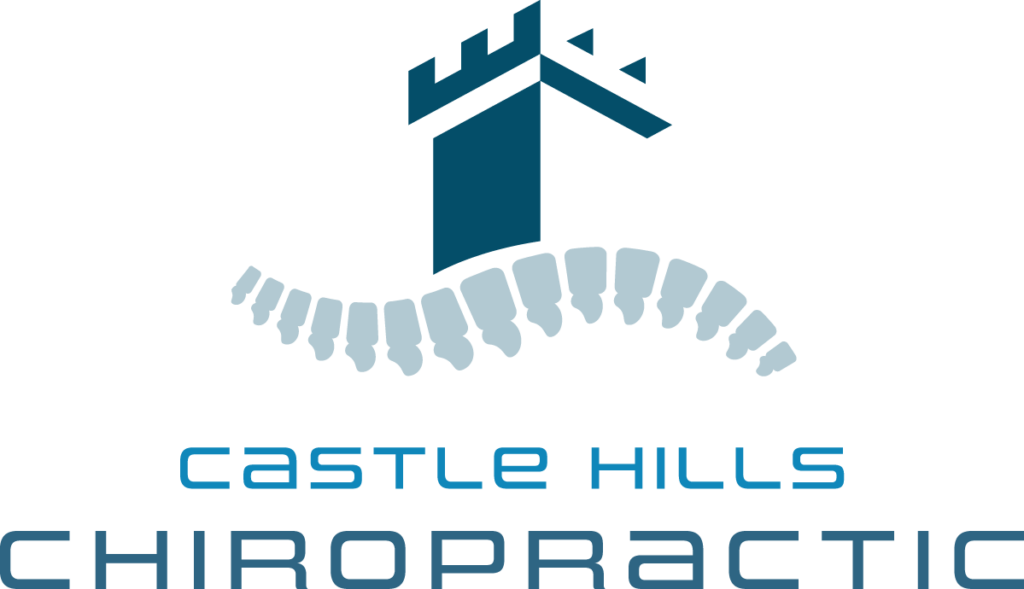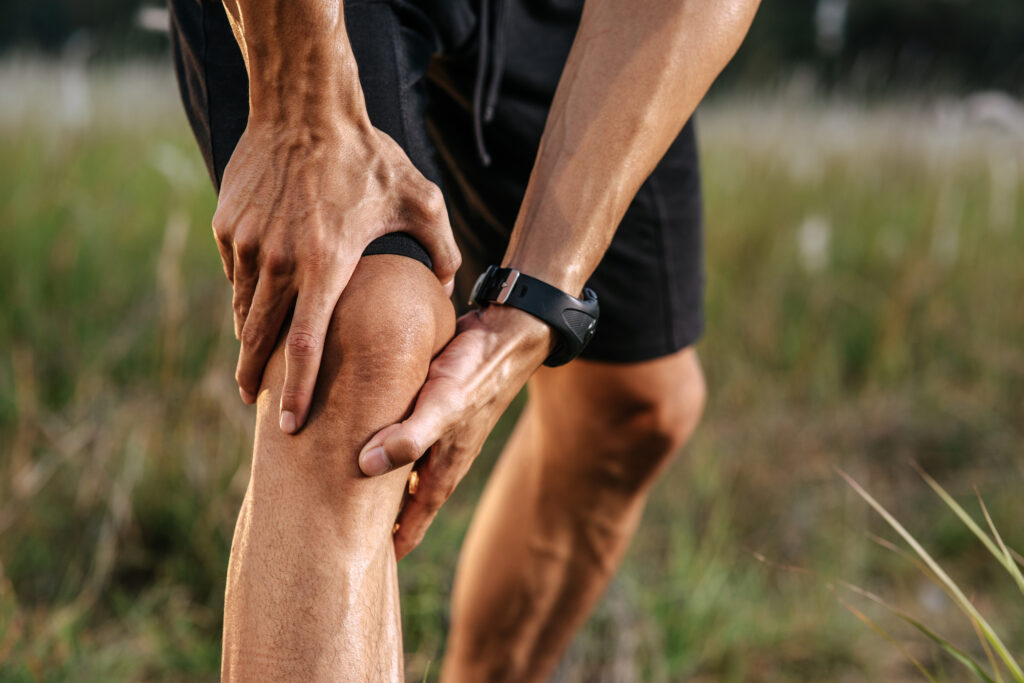When it comes to enhancing joint flexibility and movement, you might wonder which authentic techniques truly make a difference. Dynamic stretching, static stretching, and methods like myofascial release offer distinct benefits, but how do they compare in practice? Understanding the nuances of each technique can lead to improved flexibility and efficiency in your movements. You might be surprised by what you learn about the role of consistency and proper form in your training routine, so let's explore these techniques further and uncover their potential impact on your overall performance.
Understanding Joint Flexibility
Joint flexibility is often underestimated, but it plays a vital role in overall physical performance and injury prevention. When you think about flexibility, it's easy to focus solely on how far you can stretch. However, joint flexibility refers to the range of motion in your joints and how well they can move through their full potential. This ability is important for executing everyday movements, from walking and running to lifting and bending.
Understanding the mechanics of joint flexibility helps you appreciate its significance. Each joint has a specific range of motion determined by factors like muscle length, tendon elasticity, and the structure of the joint itself. If your joints lack flexibility, you may experience restricted movements, resulting in poor performance during physical activities. For instance, tight hips can hinder your ability to squat effectively, while stiff shoulders can limit your overhead reach.
You can enhance joint flexibility through various techniques, such as static and dynamic stretching, yoga, and mobility drills. It's important to focus on your body's needs; areas that feel tight or restricted may require extra attention. Regularly incorporating flexibility training into your routine can lead to improved athletic performance, better posture, and reduced risk of injury.
Ultimately, recognizing the value of joint flexibility and actively working on it sets the foundation for a more functional and resilient body. So, pay attention to your joints, and take proactive steps to enhance their flexibility. Your body will thank you!
Importance of Dynamic Stretching
Dynamic stretching plays an essential role in preparing your body for physical activity. It enhances your range of motion, increases blood flow, and reduces the risk of injury.
Understanding the benefits, techniques, and timing of dynamic stretching can elevate your performance and overall flexibility.
Benefits of Dynamic Stretching
Incorporating dynamic stretching into your warm-up routine can greatly enhance your performance and reduce the risk of injury. By engaging in dynamic stretches, you're priming your muscles and joints for the activity ahead. This prepares your body for movement, increasing blood flow and improving overall flexibility.
Dynamic stretching improves your range of motion, allowing you to move more freely and efficiently during your workouts or sports. When you perform these stretches, you also activate your nervous system, which can boost your coordination and balance. This heightened readiness converts to better performance, whether you're running, jumping, or lifting weights.
Moreover, dynamic stretching helps to gradually elevate your heart rate, making it easier for your body to shift into more intense physical activity. It can also reduce muscle stiffness, which often leads to injury.
Techniques for Effective Stretching
Effective stretching techniques are essential for maximizing the benefits of your warm-up routine. One key method is dynamic stretching, which involves moving parts of your body through a full range of motion. This approach prepares your muscles and joints for physical activity by increasing blood flow and enhancing muscle elasticity.
To incorporate dynamic stretching, start with movements that mimic the activity you're about to engage in. For example, if you're going to run, perform leg swings, high knees, or butt kicks. These exercises elevate your heart rate and activate the relevant muscle groups.
Focus on controlled movements—avoid bouncing or jerky motions, as these can lead to injuries. Aim for 10 to 15 repetitions of each stretch, allowing your body to gradually adapt to the heightened activity level.
Remember to maintain proper form throughout each stretch. Quality matters more than quantity; prioritize smooth, fluid motions that engage your core and stabilize your body.
Timing and Frequency Matters
Timing and frequency play an essential role in how well dynamic stretching benefits your performance. Incorporating dynamic stretching into your routine before workouts can greatly enhance your flexibility and range of motion.
Ideally, you should aim to perform these stretches right before your activity, as this primes your muscles and joints for movement.
Consider your frequency as well. Engaging in dynamic stretching consistently, at least three to five times a week, can lead to noticeable improvements over time. By making it a regular part of your warm-up, you'll not only enhance your athletic performance but also reduce the risk of injury.
Don't underestimate the timing of your stretching sessions. If you wait until after your workout, you're missing out on the essential benefits dynamic stretching offers during your warm-up.
Timing it right can elevate your overall readiness for physical activity and help you perform at your best.
Benefits of Yoga
Practicing yoga offers numerous benefits that can enhance both your physical and mental well-being. One of the most significant advantages is improved flexibility. As you flow through various poses, you'll stretch and lengthen your muscles, which can lead to greater joint mobility. This increased flexibility not only helps you in yoga but also translates to better performance in everyday activities.
Yoga also fosters strength. Many poses require you to support your body weight in different ways, building muscle groups you mightn't typically engage. This strength can protect your joints, reduce the risk of injury, and improve your overall stability during movement.
Moreover, yoga encourages mindfulness and stress reduction. As you focus on your breath and body, you'll cultivate a sense of calm and presence. This mental clarity can help you manage stress, anxiety, and even depression, leading to a more balanced emotional state.
Additionally, regular practice can enhance your posture. Many yoga poses target the muscles that support your spine, helping you develop habits that promote better alignment. This improved posture can alleviate discomfort and tension, especially if you spend long hours sitting.
Lastly, yoga promotes better circulation and cardiovascular health. The combination of movement and breathwork can enhance blood flow, delivering oxygen and nutrients to your cells while flushing out toxins.
Role of Pilates
Incorporating Pilates into your fitness routine can considerably enhance your overall strength and flexibility. This low-impact exercise method focuses on core stability, proper alignment, and controlled movement, which are essential for improving joint flexibility.
When you practice Pilates, you'll engage your muscles through a series of precise movements that promote lengthening and stretching.
You'll find that Pilates emphasizes the connection between breath and movement, helping you develop better body awareness. As you concentrate on your breathing, you'll also learn to control your movements more effectively, reducing the risk of injury. This attentiveness can lead to improved flexibility in your joints over time.
Additionally, many Pilates exercises target specific muscle groups while also encouraging a full range of motion. For example, exercises like the Roll Up or the Swan can help stretch your spine and improve your shoulder and hip flexibility.
These movements require you to move through various planes, ensuring that your joints work through their full range of motion.
Incorporating Foam Rolling
Foam rolling can greatly enhance your joint flexibility by releasing tension and improving blood flow.
You'll want to learn effective techniques to maximize these benefits, plus understand how often and how long to roll for best results.
Let's explore how to incorporate foam rolling into your routine for better mobility.
Benefits of Foam Rolling
If you've ever experienced tight muscles after a workout, foam rolling might just be the relief you need. This simple yet effective technique helps to alleviate muscle soreness and improve overall flexibility. By applying pressure to specific areas, foam rolling breaks down knots and adhesions in your muscles, promoting better blood flow and faster recovery.
Additionally, foam rolling can enhance your range of motion. When your muscles are less tense, you can move more freely, making it easier to perform exercises and daily activities. You'll likely notice an improvement in your performance, as well, since your muscles can function more efficiently without the restriction of tightness.
Another benefit of foam rolling is its ability to reduce the risk of injury. By keeping your muscles pliable and healthy, you lower the chances of strains and sprains, especially during intense workouts.
Plus, it can be a great way to unwind and relieve stress after a long day. Incorporating foam rolling into your routine can be a game-changer, helping you feel more balanced, agile, and ready to tackle your fitness goals with confidence.
Techniques for Effective Rolling
Mastering effective foam rolling techniques can greatly enhance your recovery and flexibility. Start by selecting the right foam roller for your needs—density matters. Softer rollers are great for beginners, while firmer ones provide deeper pressure for experienced users.
When rolling, focus on one muscle group at a time. Position the roller under the targeted muscle and use your body weight to apply pressure. Roll slowly, allowing the roller to glide over the muscle for about 30 seconds, stopping at any tender spots. Pause and breathe through the discomfort to release tension.
Incorporate a variety of movements: you can roll back and forth or in circular patterns. Don't rush; let your muscles adapt to the pressure. Aim to cover all major muscle groups, especially those prone to tightness, like the quads, hamstrings, and IT band.
Remember to keep your core engaged to maintain stability, and when rolling your upper body, use your arms for support.
Finally, hydrate afterward to help flush out toxins released during the process. By following these techniques, you'll maximize the benefits of foam rolling, promoting better flexibility and movement.
Frequency and Duration Recommendations
To optimize the benefits of foam rolling, aim for two to three sessions per week, dedicating about 10 to 15 minutes each time. Consistency is key, and regular practice can greatly improve your joint flexibility and overall movement.
During each session, focus on rolling out major muscle groups, such as your quads, hamstrings, calves, and back. Spend about 30 seconds to 1 minute on each area, adjusting the pressure based on your comfort level. If you find certain spots particularly tight or painful, you might want to pause and hold the foam roller on those areas for an extra few seconds to release tension.
Incorporating foam rolling into your warm-up or cool-down routine can also enhance its effectiveness. Before a workout, it helps prepare your muscles for activity, while post-workout rolling aids in recovery.
Listen to your body; if you feel any discomfort or fatigue, consider reducing the frequency or duration.
With time, you'll notice improved flexibility, reduced muscle soreness, and better overall movement quality. So grab that foam roller and get rolling—you'll be glad you did!
Exploring Myofascial Release
Myofascial release is a powerful technique that can greatly enhance your flexibility and relieve tension in your muscles. This hands-on approach targets the fascia, a connective tissue that surrounds your muscles, bones, and organs. When your fascia becomes tight or restricted, it can limit your movement and cause discomfort. By applying gentle sustained pressure, you can help release these restrictions and restore proper function to your body.
To perform myofascial release, you'll often use tools like foam rollers, massage balls, or simply your hands. Start by identifying tight areas in your body, such as your back, hips, or thighs. Once you've pinpointed a tension spot, apply pressure for 30 seconds to two minutes, allowing your body to gradually relax. You might feel a sense of release as you breathe deeply and focus on the area.
It's important to listen to your body during these sessions. If you encounter a painful spot, don't force it; instead, ease off the pressure and try again later. The goal is to encourage relaxation, not to create additional discomfort.
Incorporating myofascial release into your routine can improve your overall mobility, making it easier to engage in other physical activities. As you become more familiar with this technique, you'll likely notice increased flexibility and reduced muscle soreness, allowing you to move more freely and confidently in your daily life.
Utilizing Resistance Training
Incorporating resistance training into your routine can greatly improve joint flexibility while building strength. This type of training focuses on using weights, bands, or your body weight to create resistance, which helps develop both muscle and connective tissue around your joints. As you strengthen these surrounding muscles, you also enhance your overall flexibility, allowing your joints to move more freely.
To get started, choose exercises that target major muscle groups and promote a full range of motion. For example, squats, lunges, and push-ups not only build strength but also encourage joint mobility. By including a variety of movements that challenge your flexibility, such as overhead presses or deadlifts, you can guarantee that you're promoting joint health effectively.
It's essential to focus on proper form during your resistance training sessions. Using incorrect techniques can lead to injuries or strain on your joints, negating the benefits of your workout. Start with lighter weights or resistance bands to master the movements before progressing to heavier loads. This gradual increase will help maintain joint integrity while enhancing flexibility.
Additionally, consider incorporating dynamic stretches into your warm-up routine. These movements help prepare your joints for the resistance exercises ahead, promoting better flexibility and reducing the risk of injury.
Remember to listen to your body; if you feel any discomfort, adjust your exercises or seek guidance from a fitness professional. By consistently including resistance training in your regimen, you'll not only boost your strength but also support improved joint flexibility.
Practicing Active Recovery
Active recovery is an essential component of any fitness routine, as it helps your body recover while still keeping you moving. Instead of jumping straight into high-intensity workouts, consider incorporating lighter activities like walking, yoga, or swimming on your rest days. These gentle movements stimulate circulation, increase blood flow to your muscles, and promote the removal of metabolic waste, which can enhance your overall recovery process.
When you practice active recovery, you don't just rest; you engage your body in a way that encourages flexibility and mobility. For instance, after a tough workout, you might spend 15-30 minutes stretching or performing dynamic movements that target your joints. This can help maintain your range of motion and prevent stiffness.
You can also explore practices like foam rolling or gentle dynamic stretches during your active recovery sessions. These movements can alleviate muscle tightness and enhance joint flexibility.
Don't underestimate the power of these less intense exercises; they play a vital role in balancing your training efforts.
Consistency in Flexibility Training
To achieve lasting improvements in flexibility, you need to commit to a consistent training routine. Flexibility isn't something you gain overnight; it requires regular practice and dedication. Incorporating flexibility exercises into your daily schedule will yield the best results. Aim for at least three to four sessions per week, but if you can fit in a few minutes of stretching every day, even better.
When you prioritize consistency, you'll notice that your muscles and joints adapt over time, making it easier to achieve deeper stretches. Start with short sessions, gradually increasing their duration as your body becomes more accustomed to the movements. This gradual approach prevents injury and promotes sustainable progress.
Different techniques, such as static stretching, dynamic stretching, or proprioceptive neuromuscular facilitation (PNF), can be included in your routine. Mixing these methods keeps your training engaging and allows you to target different muscle groups effectively.
Remember to listen to your body; if you feel pain, it's crucial to ease up.
Tracking your progress can also motivate you to stay consistent. Keep a journal or use an app to note your flexibility improvements over time. Celebrate small victories, and don't be discouraged by setbacks.
Flexibility training, like any other fitness goal, requires patience and persistence. So, stay committed, embrace the journey, and watch your flexibility improve as you maintain this critical consistency in your training.
Conclusion
Incorporating authentic techniques like dynamic stretching, yoga, and foam rolling into your routine can greatly enhance your joint flexibility and movement. Don't forget the benefits of Pilates and myofascial release, too. By practicing active recovery and maintaining consistency, you'll not only improve your flexibility but also enhance your overall movement efficiency. So, take the time to engage in these practices regularly, and you'll feel the difference in your performance and daily activities!



